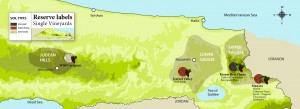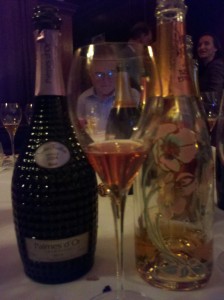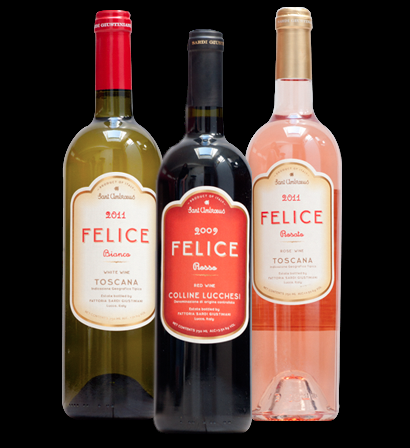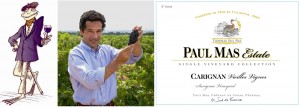 Think Bordeaux and the Cabernet Sauvignon and Merlot varieties naturally spring to mind, while thoughts of Burgundy immediately recall Pinot Noir and Chardonnay. But when it comes to Israeli wines, no specific grape variety comes to mind. Recanati’s winemaker, Gil Shatsberg, agrees. Moreover, he knows that the last thing that the world needs is another Merlot or Chardonnay. Yes, he does produce wines from these two (and other) grape varieties, but, since 2008, Gil has been working to more clearly define Israeli wines.
Think Bordeaux and the Cabernet Sauvignon and Merlot varieties naturally spring to mind, while thoughts of Burgundy immediately recall Pinot Noir and Chardonnay. But when it comes to Israeli wines, no specific grape variety comes to mind. Recanati’s winemaker, Gil Shatsberg, agrees. Moreover, he knows that the last thing that the world needs is another Merlot or Chardonnay. Yes, he does produce wines from these two (and other) grape varieties, but, since 2008, Gil has been working to more clearly define Israeli wines.
Shatsberg’s quest coincided with his arrival at Recanati. Launched in 2000, Recanati is owned by Lenny Recanati, an Israeli businessman with a passion for collecting wine. Originally from Saloniki, the Recanati family then lived in Italy for centuries before moving to Israel in 1933. With this Italian heritage, Lenny’s parents made wine from grapes grown in the backyard when he was a child, nurturing his love of wine. They winery initially produced 200,000 bottles and currently has an annual production of 83,000 cases, with 80% devoted to reds and 20% to whites.
Today, Shatsberg is looking to make wines that work well in Israel, beginning with the country’s Mediterranean climate and ending with the diversity of Israeli cuisine. Consequently, his search has led him to plant Mediterranean grape varieties such as Viognier, Petite Sirah and Grenache. Similarly, he has found existing vineyards that meet the same criteria such as a dry-farmed vineyard with 30 year old Carignan vines in the Judea Hills. Overall, he aims for elegant wines without high alcohol levels and that are meant to be drunk young, choosing to pick early, macerate for only a short period of time and ferment at cool temperatures.
Although many of the newer plantings have not yet come online, the winery is producing high quality wines from the usual suspects and has started its focus on Mediterranean blends. And, unlike the kosher wines from childhood memory, these certified kosher wines are an absolute pleasure to drink!
WINE TASTING NOTES
Recanati Sauvignon Blanc 2011, Shomron, Israel, $15.00
Sourced from grapes grown in the Upper Galilee, this wine delivers aromas of tropical fruit, pineapple and slight floral notes. It is dry, with medium+ acidity, rich and ripe fruit (especially pineapple), slight spice, and a round, full body, culminating in medium to long length.
Recanati Special Reserve White 2010, Galilee, Israel, $53.00
Produced from a vineyard selection of the winery’s top vines, harvested at limited yields, this wine is a blend of 50% Chardonnay, 25% Viognier and 25% Sauvignon Blanc. Fermented in barrels with sur lie/bâtonnage aging, Shatsberg looks to Burgundy as his winemaking inspiration for this wine. The result is notes of honey, oak, pineapple, spice and orange with a dry palate of medium+ acidity and full body. Flavors of pineapple, tropical fruit, orange/tangerine, floral and a hint of peach are joined by slight spice and toothpick character in the finish.
Recanati Cabernet Sauvignon 2011, Galilee, Israel, $17.00
Although these grapes are planted at a lower elevation than many other Recanati vineyards, this wine is still lively on the palate despite its big, bold fruit profile. The pronounced nose of blackberry and plum gives way to spices – cinnamon and anise. Dry on the palate with medium+ acidity and soft tannins, juicy fruit dominates the wine’s flavor profile.
Recanati Petite Sirah-Zinfandel Reserve 2011, Galilee, Israel, $26.00
A blend of 95% Petite Sirah, accented with 5% Zinfandel, Gil notes that it is important to green harvest (remove unripe grapes early on in the season) the Petite Sirah, which is capable of high yields, in order to permit the grapes to fully ripen. Intense floral, red fruit and spice aromas greet the nose. The dry palate has medium+ acidity and medium+ tannins with ripe, but balanced, red and black fruit character and long length.
Recanati Wild Carignan Reserve 2011, Judea Hills, Israel, $50.00
Produced from 100% Carignan grapes, this wine is sourced from an old vineyard near the kibbutz where Gil grew up and spends six to eight months aging in barrel. The nose offers up aromas of black fruit, blueberry, slight oak and cinnamon/spice. The dry palate has medium+ acidity along with notes of vanilla and black and bramble fruit. Despite a slight rusticity to this wine with its dusty tannins, it is very nicely structured and complex.



 Frenchman Bernard Portet first visited California on a fact-finding mission back in the late 1960s and then returned in 1971 to help launch Clos du Val. After a few months in the Napa Valley, he suggested that his wife come join him as he expected to stay longer than originally planned – perhaps through harvest 1972. Thankfully, she accepted the invitation since he never left, serving not only as co-founder, but also as the company’s full-time winemaker for nearly 40 years. And, for almost four decades, Bernard helped to establish Clos du Val as a highly regarded name in the wine industry.
Frenchman Bernard Portet first visited California on a fact-finding mission back in the late 1960s and then returned in 1971 to help launch Clos du Val. After a few months in the Napa Valley, he suggested that his wife come join him as he expected to stay longer than originally planned – perhaps through harvest 1972. Thankfully, she accepted the invitation since he never left, serving not only as co-founder, but also as the company’s full-time winemaker for nearly 40 years. And, for almost four decades, Bernard helped to establish Clos du Val as a highly regarded name in the wine industry.
